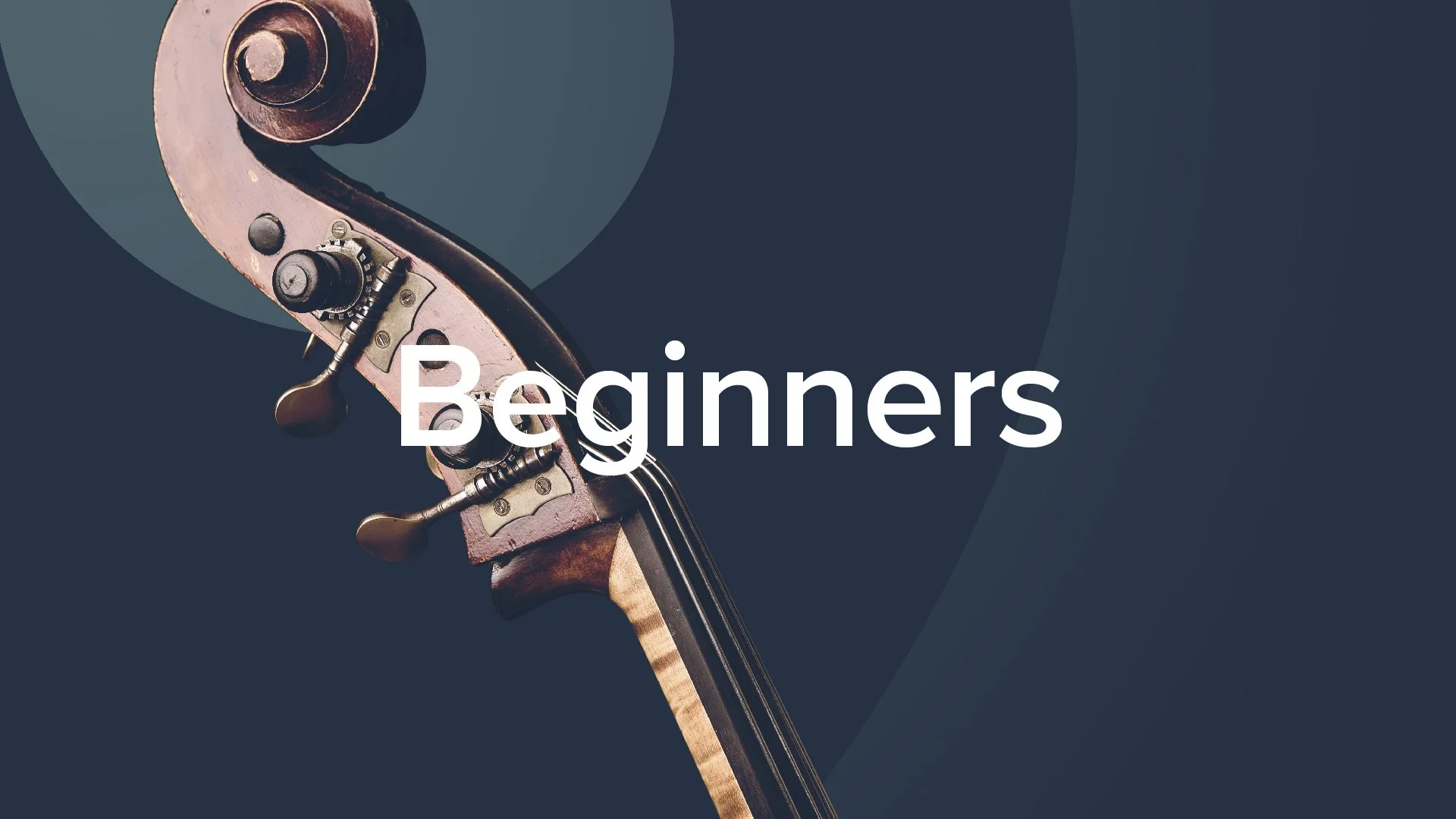Wondering where to start with your double bass playing?
Here are Our Top 10 Lessons for New double bassists or Bass Guitarists switching to Double Bass
Sometimes it’s hard to know where to begin with the double bass. Long notes? Scales? Pieces of music? Or even, how do I hold this thing? (We’ve all been there…!) So, here are our top 10 beginner’s lessons to help you get off to a great start. These lessons are perfect for anyone starting out with the upright bass, or for bass guitarists making the switch!
Enjoy your double bass journey and we hope you find the lessons helpful.
1. Holding the bass
Whether you want to sit or stand with the bass, it’s important to do it correctly so you don’t cause potential physical problems or pain down the line. It’s a big instrument so there are a few things to consider. Here are two lessons on how to play standing or seated in comfort.
2. The Bow
A comfortable bow grip is an essential skill for all bassists. This quick lesson from our beginner classical course tutor, Jason Heath, covers the basics and could make a big difference to your playing.
3. Applying Rosin to Your Bow
Are you using enough rosin, or maybe too much? If it’s not correct your bowing could sound terrible, so check out our short video to learn how to get it just right.
4. Top Bowing Tips
These simple, but effective tips by Jason Heath can help you get your bowing technique together. Playing arco is an essential skill for all bassists, regardless of what style of music you play - by the way, a frisbee is not required for this lesson!
5. How to use arm weight
This is an excellent lesson by DDB classical expert David Allen Moore about using your natural weight when playing the double bass. It’s a key concept that will impact all areas of your technique and one that new students often struggle with, especially those from a bass guitar background.
6. Left-hand technique
🫲 This lesson from DDB founder Geoff Chalmers covers the fundamentals of left-hand technique and was one of our first-ever lessons on YouTube. Released in 2013 it is currently our most viewed video of all time!
7. All the notes (Chromatic scale)
Jazz legend, John Goldsby helps you find all the notes on the fingerboard using chromatic scales - you can download the free sheet music to this lesson here.
BONUS TIP 🔍 If you are looking for a way to make finding the notes easier, check out this lesson by Geoff Chalmers on Tuning Anchors. Understanding the physical reference points of the double bass will make everything you play else a lot easier!
8. Right-hand technique (Pizzicato)
🫱 Back to right-hand technique with Geoff Chalmers, this time on pizzicato technique, which all bassists (classical and jazz) will need to learn.
9. Beginner 1-Octave Scales
Scales are the key for any musician, so this lesson explains two highly effective ways which you can use to learn them. Getting your scale practise off to a good start will benefit all aspects of your playing, so it’s well worth a watch.
👀 If you are looking to download a free PDF of 1-octave scales with fingerings and backing tracks, click here.
10. Simple Concepts - rounding it up
In this final video, our amazing jazz bass specialist Katie Thiroux rounds up some simple, but essential, concepts to solidify your playing technique. This includes right hand, left hand, and stopping those distracting fingerboard buzzes.
By the way, Katie Thrioux is a heck of a teacher as well as an incredible bassist. If you are looking for a video that will cover a lot of ground with no fluff, I’m sure you are going to love this one!
🤷♂️ Still having problems? Check out this discussion with Geoff Chalmers and Jason Heath on double bass students’ most common problems, and how to fix them!
Once you’re done with these 10 lessons, look out for the next article in our series to help you progress further (coming soon…)!
Ready to take a full course?
〰️
Ready to take a full course? 〰️
Check out our courses designed especially for double bass beginners or bass guitarists switching to the double bass.
Pick from our three comprehensive beginner courses, based on the genre you want to learn and the tutor you want to learn with:
Or, explore more of our free lessons for beginners.




